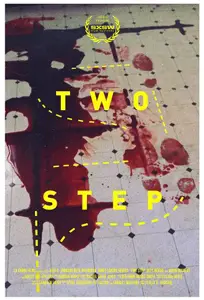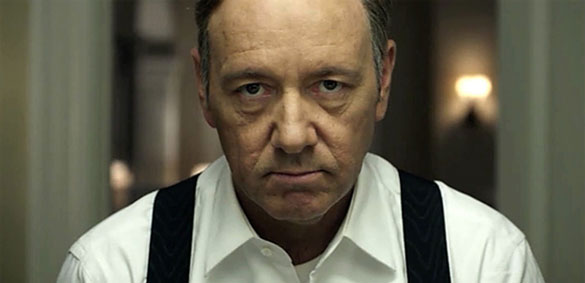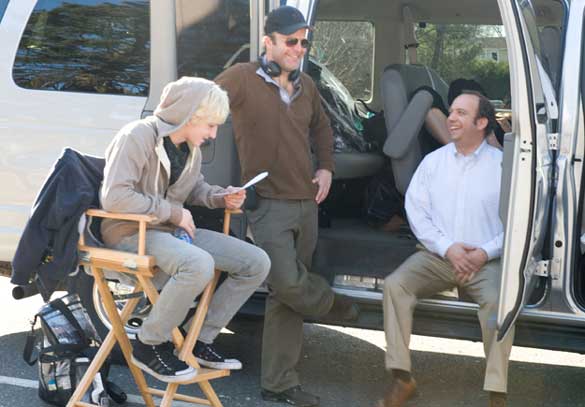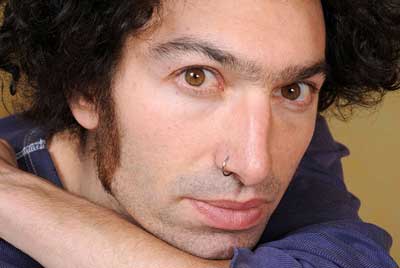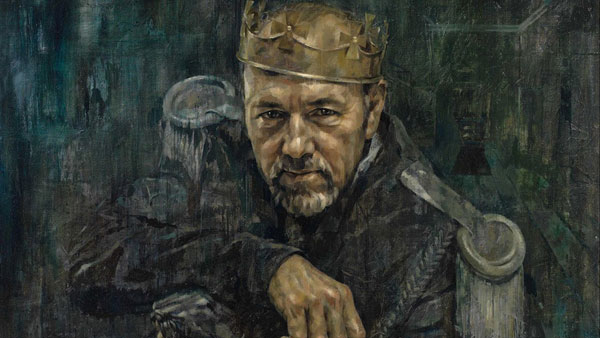
Director Jeremy Whelehan captures so perfectly what it is like to be in a company of actors deep into a production that it immediately made me want to audition for a play. His film, NOW: In the Wings on a World Stage, follows the much talked about production of Richard III – that was directed by Sam Mendes and starred Kevin Spacey – across three continents and a handful of theaters. We watch the cast bond, perform, rehearse and live their lives backstage and off as they bring Shakespeare’s classic tale to cities in Istanbul, Greece, Australia, China and Qatar.
He spends a lot of time with Spacey, and what we see is great, but he also focuses on the other actors in the company and we get a chance to live and see what life is like as a traveling actor; their relationships and the friendships they form. For any actor who’s ever been in a play, I guarantee you’ll find this film wonderfully entertaining.
I talked to Whelehan recently about how he came up with and pitching the idea to both Mendes and Spacey, the challenges of filming in the different theaters and one particularly emotional sequence with actor Steven Lee Anderson.
More info on Now: In The Wings on a World Stage | Stream it on Amazon!
The whole idea of you following this play and the company of actors, this was originally your idea?
Jeremy Whelehan: Yeah. Essentially yeah. I have worked with Kevin a number of times before, both film projects and theatre productions, particularly at the Old Vic. And I was very aware of Bridge Project having done 2 years prior to that, directing and then doing these tours and taking it around the world. So when I heard that Kevin was doing the play Richard III and Sam was going to direct, particularly when I heard the extent of the tour that they were doing, I felt it was a real opportunity to make a film about live theatre in a way that I don’t think that that’d really been done before.
And so I came to Kevin, pitched to him, and pushed and pressed and fought and he seemed to love the idea from the get go. And then it was just a matter of figuring out how to go to all of the places practically and how to move it forward. So the initial idea I brought to Kevin.
You traveled with the company the whole time?
Jeremy Whelehan: Not really. It was an interesting one because after the actual live production came into sort of reality, it became greenlit and actually started to happen, the play was already up and running at the Old Vic. Kevin and Sam graciously let me into the rehearsal room in the last couple of days… just me and a camera to shoot some footage way back during the rehearsals. But that was long before there was really any official production happening. It then took a number of months to get everything into place and to get moving and to get the financing sorted, and it wasn’t really until the end of the run in London that we started our film, our documentary production in earnest. And so it was sort of by that time that we sort of got up and running and got moving.
And when we were looking at which countries to go to, I think they visited 12 or 13 cities on the whole tour. And it was clear that we weren’t going to need to go to every single city. And so then it just became a balance between where would be most interesting, where would they spend the most time, what cultural backdrops would offer the most context for the film and the idea of introducing international theater of this mad touring production. We did go virtually everywhere. We went to 9 of 12 of the cities that they went to. We didn’t go with them to Spain, they went to Hong Kong, and Singapore. And they were the 3 cities we didn’t join them on during the tour. But everywhere else we were along for the ride and in many ways we were sort of embedded within the company and part of the company.
What was the worst city or worst theatre to film in?
Jeremy Whelehan: They all had their own challenges, I think. In a similar way for the play, each theatre had a slightly different dynamic and slightly different facilities and everything else. Epidaurus, which is a two and a half thousand year old monument, essentially, obviously filming there, it’s all stone, there’s no roof, you’re outdoors, there’s the noise of the cicada bugs, there’s wind, there’s 15,000 people in the audience. I mean, it’s a very different filming challenge to somewhere like the theatre in China and Beijing, which was like a spaceship that landed from the future full of all of the technical elements and requirements and offices and everything that you’d ever need. All the facilities you’d want.
Each place was very different and each theatre in each country offered sort of different challenges to us throughout the film production but also to the theatre company.
You know another thing I really loved about it, is that you captured what it’s like to actually be in a company of actors. Everyone just gets really close and everyone’s kind of best friend during that run of the production. Was that something you were looking forward to capturing or was it just sort of part of what happened?
Jeremy Whelehan: Probably a little bit of both. I mean, in a way, I’ve worked in a number of theatres and companies before and been a member of a company as an assistant director or associate director. So I understood the sort of dynamics that can happen. I mean, there is something that happens in the crucible of the rehearsal room and in the sort of intensity of live performance every night when everyone’s got the sort of same flow of adrenaline and energy and the anticipation of stepping into the lights of the stage.
And then the reality of the tour was an incredibly intense time. You’re never really stopping. There are few opportunities to really stop and catch your breath, which we have in the film. Because we go to so many exotic locations and there were so many extraordinary experiences like walking the great wall or Kevin taking them on these incredible yachts in the Mediterranean and that was important and one of the really crucial things to film into the documentary was the effort that all of this required. The work and the sheer energetic sort of intensity for the company to go not only night after night doing this performance for 3.5, 4 hours every night in front of audiences, but also then week after week to go to a new city, a new country, a new hotel, re-rehearse the show, re-tech the show, perform it again, and then pack your bags and then move on again.
I think something in all of the intensity of that, and the need for everyone to sort of trust and rely on each other, lead to a very special quality of this particular tour, which meant that it really did become like the most remarkable company of actors. Everyone got on brilliantly well and that was reflected in the film.
One of the things that I was very aware of very early on was what a remarkable job Sam had done casting this play. Half American, half UK actors and crew. I think he was casting not only people who would be talented and brilliant actors and deliver a performance that would behoove such a production, but also in his casting somehow he cast a brilliant group of people whose balance and talents and energies and interests would somehow fuse together as a family. And I think a lot of that was Sam’s initial casting and possibly borne out of some experience from previous years. Understanding not only would these actors have to work together on stage in a way, but they would also have to work together on a daily basis in life.
How many hours of footage did you shoot?
Jeremy Whelehan: We shot quite a bit. We never really broke it down into hours because in this day and age you’re kind of more in gigabytes and whatnot. But we shot, on our main camera, we shot about 150, 200 hours.
And it really was an extraordinary tapestry in the edit then to create the film that we created and to reflect all of the stories that we tried to communicate and tell in the film. Whether of the 20 actors who play the parts or the 20 characters they played, or the 10 or 12 theatres they played in, the countries they go to. There was also the story of Richard III and the story of the production.
There were many, many sides to this film and many, many stories to tell and that was going to be the balance and the dance really to try and communicate all of this in a fluid, lucid, and engaging way that wasn’t compelling. That would put you right in the company, essentially, and that was the hope. The film is called Now and it’s live theatre, which happens in the moment. And the hope for me as the director was to make a film where the audience watching it would feel like they were there. And we didn’t use any voice over or any of those sort of narrative tools because you really wanted to keep it in the present tense as much as possible and give it the sense that we were on the tour with these actors traveling around the world with them and we were going from city to city as they went from city to city alongside to give the sense that we were in the play on the night that we were standing in the wings beside them as they were going on stage.
It was something we really worked hard to try and achieve in the edit and give that sense of now, that sense of the moment.
Another thing I liked about it is even though I truly love Kevin Spacey, you also focused on all of the other actors too. And especially one moment I really loved, it just only lasts a couple minutes, but when Steven Lee Anderson was talking about his battle with cancer. That was just… he didn’t seem emotional, but I got emotional watching it.
Jeremy Whelehan: It’s a really wonderful moment in the film. Steve, he was a really wonderful character within the company. Everyone was fond of him. He had this incredible outlook on life and wonderful joy and he savored every single moment.
I think that perspective was given to him possibly through his battles with his cancer and these things, so it was really a wonderful way to give a sense of perspective to the journey and the adventure these guys were all on. And somebody who was really savoring it, soaking it up, and appreciating it and seeing it for what it was.
And, again, that sort of lent itself to the theme that I tried to develop in the film of really living in the moment and savoring where you are and what you’re doing at any given time. That was something that Stevie’s story and Stevie’s whole philosophy and outlook on life absolutely epitomized. And so there is something wonderful in Stevie and how he talks about it. He’s very clear in what he says.
And also the thing about Steve that catches me and that catches many people when they see the film is that he says when he learnt this, when he learnt he was sick and that he had cancer, the things that came to his mind and one of them was, “Thank God I did what I wanted to do in my life and became an actor.” And that moment I think resonates for a lot of people in that we all ask ourselves all the time what do we want to do to be happy and have you made the right choices and are you following the right path? And it’s a challenging thing to be faced with and it’s a challenging thing to question, but hopefully the film encourages you or the viewer to do that and to follow your truth and follow your passions.

